So I’ve been going through a lot of Modernist Cuisine recipes and thought I would go back and visit some other cookbooks I have on my shelf. I’ve had my eye on the apertif that opens up The Fat Duck Cookbook
and thought I’d give it a shot. It’s a light, sour-sweet flash frozen meringue. It requires the usual things – things like high methoxyl pectin, malic acid, matcha tea powder and liquid nitrogen. Ah, modern cookery. Part science, part cooking, part detective work.
Ingredient Hunt Down
High methoxyl pectin, eh? It’s always something. I did a little research. A lot of rats have eaten the stuff, apparently. Oh, here’s an article on its viscometric behavior. And another on its swelling behavior as a gel. Mm. Not quite what I’m looking for. But here’s what I found out.
Pectin is an extract from the cell walls of plants, mostly fruits. It is used as a gelling agent and is often used for jams and jellies. High methoxyl pectin is used in high sugar content foods because it needs that environment to gel, and low methoxyl pectin is used in foods with low sugar content. The pectin base for the recipe has 175g of sugar to 16g of pectin, so this seems like the perfect environment for it. It’s basically a super simple syrup. I found what I needed on eBay.
I went to our local Japanese super store, Uwajimaya, to find the matcha green tea. I asked for assistance finding it, and the store employee asked if I needed any guidance. I didn’t know I needed any, so I said yes. Matcha tea, it turns out, is very interesting. There is a Japanese tea named gyokuro that uses a certain tea leaf. Matcha uses the same leaf, but only those that have been in the shade. The lack of sunlight sweetens the tea. It is hand picked, dried, de-veined, and then finely ground. It is the tea used in the Japanese tea ceremony ritual. It comes in two types: Ceremony grade and Culinary grade. Culinary grade: $8. Ceremony grade: $24. I chose Culinary.
Making A Sour Foam
With the ingredients on hand, I went to work. I made the pectin syrup, and then started on pasteurized lime juice. From what I’ve gathered, pasteurization increases the storage life of the juice and helps retain absorbic acid (aka vitamin C) as well. Lime juice flavor deteriorates rapidly, so this probably is done to keep the flavor as fresh as possible. I combined the juice with 10% sugar, vacuum sealed it up, and put it in a water bath for 10 minutes. Simple enough.
I combined the syrup and lime juice with the rest of the ingredients: matcha tea powder, malic acid, vodka, and egg whites. Chef Blumenthal describes the creation process:
The cleanser’s core would be a green tea that had plenty of tannin but without the harsh kick it sometimes gives…I wanted to get the saliva going as well. Acid seemed a good way to achieve this, so I combined the tea with lime juice and added a little malic acid…To carry the flavor of green tea and lime around the mouth I added vodka – its neutral taste allows the flavor of what is infused in it to come through…To emphasize that cleansing feeling, the mix had to be as light as possible, a fragile evanescent thing that registered in the mouth and then – puff! – was gone.
Now here is a guy who is seriously thinking through his dish here. “How can I make the diner’s palate be cooled and cleansed, but get their mouth watering at the same time, so they are instinctively looking forward to the next course?” To his knowledge, this was the first dish served in a restaurant made with liquid nitrogen. There’s a reason he’s one of the best chefs in the world.
I threw the mix in a cream whipper, charged it up, and put it in the fridge to cool.
Freezing Foam Puffs
Next was the fun part – cooking the foam. This required liquid nitrogen (LN), but having done some kitchen cryogenics before, I was prepared with the right equipment and supplier. I set up a bowl of LN, boiling away at a nice −196 °C/−321 °F. I squirt a ball of foam onto a spoon and dumped it for about 10 seconds, then flipped it over for another 10 seconds. I pulled it out, sprinkled some matcha tea powder on it, and had my puff.
The flavor? Fantastic. It’s sweet but tart, and the coolness refreshes the mouth as it vanishes upon the tongue. The most interesting part was nailing down the cooking time. A little early, and the mousse would break apart if you tried to pick it up. A little long, and it was crunchy and way too cold on the palate. There was this middle ground where it was cold enough to pick it up, but once in your mouth, it would dissolve perfectly. If LN was easily stored, I could eat these every day. I ended up taking the whipper and my dewar down to my friend’s bar and made some for the employees. They loved it and enjoyed the whole show of making them.
I had some LN left over, so I grabbed some orange juice and had an instant fresh fruit sorbet. Pure orange goodness. And, you know, not a bad palate cleanser in itself.
Jethro

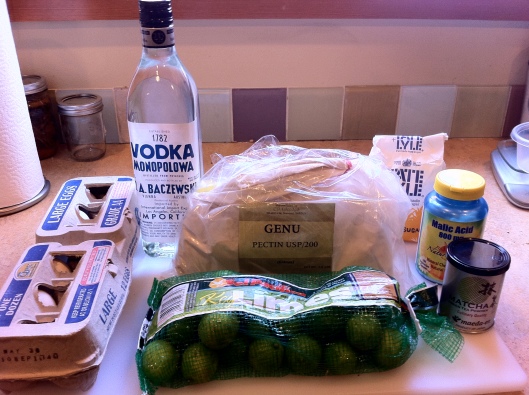

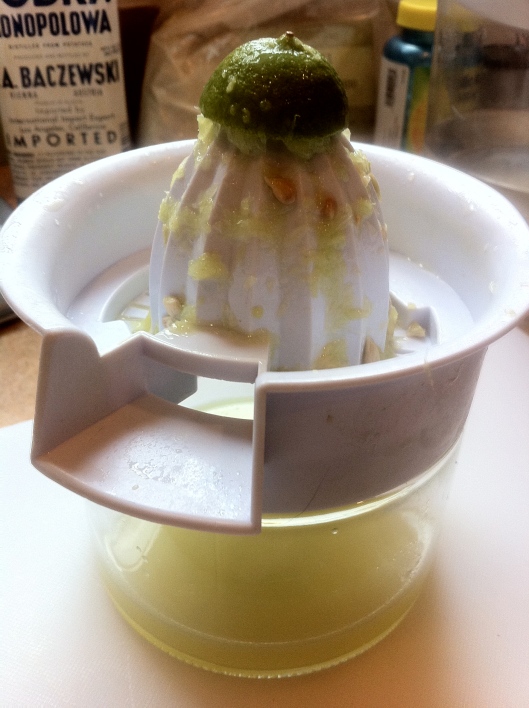

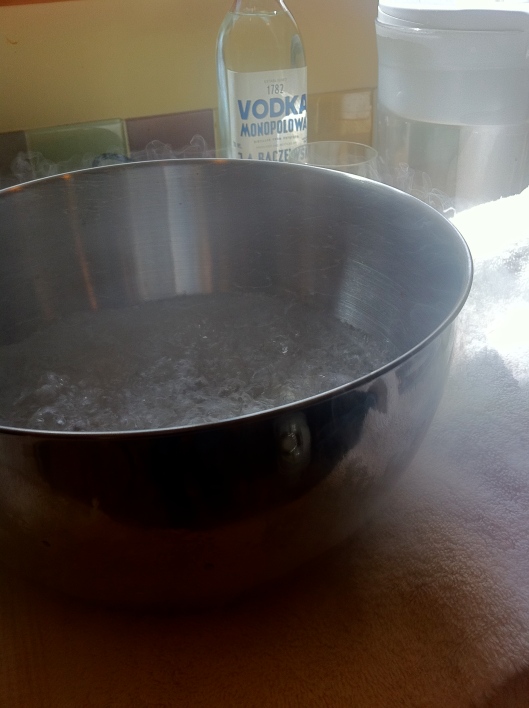
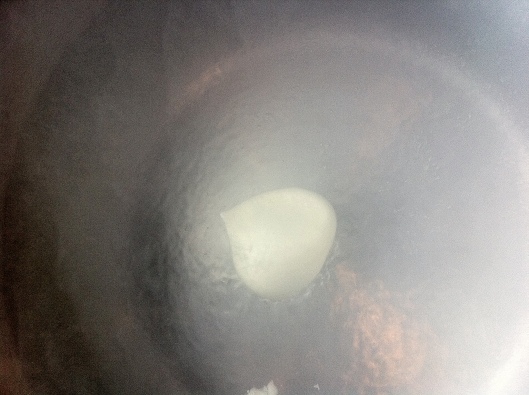
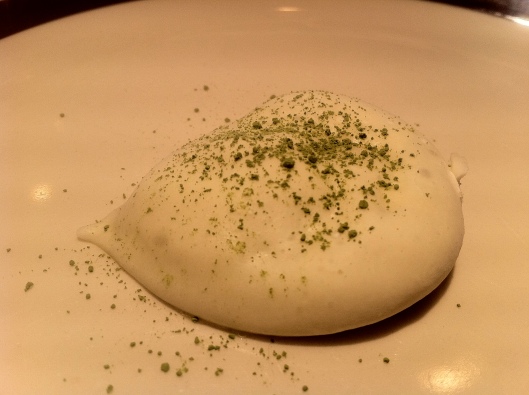

Pingback: Cryopoached Coconut Meringue with Powdered Strawberry | Seattle Food Geek
Pingback: Cryopoached Coconut Meringue with Powdered Strawberry « Jet City Gastrophysics
Hi– We live outside of Portland. Went to Fat Duck in September & are working at recreating this dish (Nitro Poached Foam). We’re having a couple of issues that seem simple–how do you get the foam off the spoon & into the nitro? Ours sticks to the spoon, and then when we try to knock it off (or use another spoon to form a canelle), the foam loses its shape & is flatter than I’d like. And, ours seems to cook faster than yours by about 2x (5s/side), perhaps because it is flatter, and it is thus more sensitive to being under/over cooked. Any hints?
Mm…I don’t recall having too much of an issue knocking it off the spoon. Perhaps have a touch of oil or water on the surface of the spoon? As far as “cooking” it goes, it’s really trial and error. There’s no good LN cooking guides like sous vide. Maybe one day – good luck!